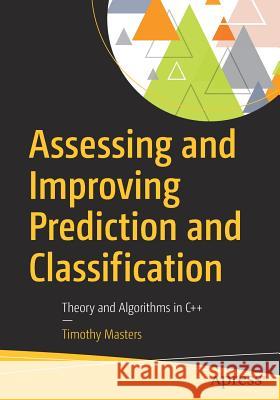Assessing and Improving Prediction and Classification: Theory and Algorithms in C++ » książka
topmenu
Assessing and Improving Prediction and Classification: Theory and Algorithms in C++
ISBN-13: 9781484233351 / Angielski / Miękka / 2017 / 517 str.
Kategorie:
Kategorie BISAC:
Wydawca:
Apress
Język:
Angielski
ISBN-13:
9781484233351
Rok wydania:
2017
Ilość stron:
517
Waga:
0.92 kg
Wymiary:
25.4 x 17.78 x 2.77
Oprawa:
Miękka
Wolumenów:
01
Dodatkowe informacje:
Wydanie ilustrowane











